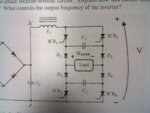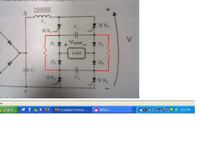pns2050
Junior Member level 1
Hello,
am trying to implement the topology below to invert from dc to ac..i am using thyristors to do that,but it seems i am not getting the results that i should.
when i trigger SCR1 and SCR4 respectivily everything seems fine , capacitors are being charged with the correct polarity
Also when i trigger SCR2 and SCR3 again capacitors are being charged with inverted polarity and also getting the correct output on my load..
But if SCR1 and SCR4 are on and i trigger SCR2 and SCR3 it seems that current flows directly to reference without passing through load.. It seems that i fail to Turnoff my thyristors while capacitors are discharging..
Any ideas what i may be doing wrong?
Thanks

am trying to implement the topology below to invert from dc to ac..i am using thyristors to do that,but it seems i am not getting the results that i should.
when i trigger SCR1 and SCR4 respectivily everything seems fine , capacitors are being charged with the correct polarity
Also when i trigger SCR2 and SCR3 again capacitors are being charged with inverted polarity and also getting the correct output on my load..
But if SCR1 and SCR4 are on and i trigger SCR2 and SCR3 it seems that current flows directly to reference without passing through load.. It seems that i fail to Turnoff my thyristors while capacitors are discharging..
Any ideas what i may be doing wrong?
Thanks

